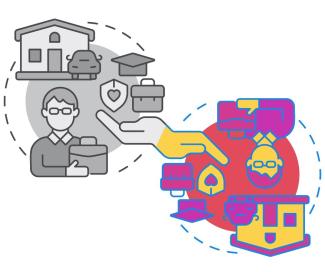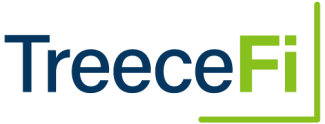
Redefining the Middle Class: From Boomers to Zoomers
That Was Then: Boomers Define The Dream
The middle class in the United States has historically been central to economic and social stability. In the mid-20th century, the middle class not only grew in numbers but also in prosperity.
Characterized by a growing economy, technological innovations, and a significant expansion of social and labor welfare, Baby Boomers reached the peak of the "American Dream." People could easily find a stable job, buy a house in the suburbs, and own a car. These were the main indicators of success.
At the start of the 21st century, globalization, automation, and financial changes greatly affected jobs and the economy.
Stable and well-paying jobs in the manufacturing sector—the bastion of the middle class—have all but disappeared. Costs for education, healthcare, and housing have risen at a much faster pace than average incomes. Many households have significantly eroded their purchasing power.
The "American Dream" of the 20th century has changed. It now feels like a never-ending race toward a goal that keeps moving away.
What was once a clearly defined class status with tangible economic indicators now feels more like an increasingly out-of-reach goal for most emerging Gen Z adults (those born between 1997 - 2012 and also known as “Zoomers”).
This Is Now: Zoomers Awaken To A New Reality
Gen Z faces unstable jobs, low wages, and rising living costs. They are changing how we view success and economic security.
Today’s younger adults are questioning the material goals of yesterday's measures of middle-class success
What is the environmental impact of our consumer-driven culture?
Do material goods really define social status?
Is a work culture that encourages us to work harder for more really worth it?
Many Zoomers are looking for more altruistic values and ways to achieve financial stability.…
Gen Z is focusing on financial education. They are developing new business models. They are investing in assets that generate passive income. These actions are helping them build a strong foundation for economic stability.
This approach helps them break the cycle of constant consumption. It also promotes fairness and social mobility. This is important in the current U.S. economic system that often favors the rich.
Finding A Way Forward: Gen Z's Challenges & Opportunities
More, More, More Money
Gen Z struggles with a big gap between wages and the cost of living. This makes it hard to reach a middle-class lifestyle.
Despite increases in productivity and corporate profitability, wages have not kept pace with the rising costs of essential goods like housing, education, and healthcare. This disparity means that even those with full-time jobs struggle to cover basic needs, eroding the perception of stability and security that has defined the middle class.
Degrees Of Debt
The high cost of higher education and the resulting accumulation of student debt present another significant obstacle to Zoomers’ economic future.
With rising college costs, many young people graduate with substantial debt, limiting their ability to save and invest in their future. This financial burden delays important milestones such as buying a home and starting a family, perpetuating economic insecurity and making financial stability harder to attain.
The Hurdles of Home Ownership
Baby Boomers and Gen X had easier access to affordable real estate. In contrast, Gen Z faces tougher challenges. Housing prices have outpaced income growth, making homeownership out of reach for many young people. These challenges make it harder for them to achieve financial stability for retirement through property ownership.
In today's high-cost environment, any financial mistake can have serious effects. It can limit chances for financial growth and make people doubt their stability and staying power.
Healthcare Costs and Longevity
Baby Boomers and Gen X had relatively lower healthcare costs and shorter retirement spans, making their financial needs less demanding than those of Gen Z.
Healthcare costs have escalated significantly compared to previous generations. This increase, coupled with longer life expectancies, means that Gen Z will need substantially more savings to cover extended retirement periods and healthcare expenses.
Saving for Retirement
Baby Boomers, Gen Z and Gen X, have relied heavily on employer-provided pensions and robust Social Security benefits for income in retirement. In contrast, Gen Z faces a future where these benefits are dwindling.
With the shift towards 401(k) and other contribution-based plans, the burden of saving for retirement falls more on individuals. Gen Z's optimism about retirement, despite these challenges, stems from their early start in savings and their proactive approach to financial planning. They value work-life balance and often engage in continuous learning about financial management.
Generation A(lpha) to Z: 6 Steps to Financial Stability
1. Start Early and Be Consistent
Compounding Growth: The earlier you start saving, the more time your money has to grow. Consistent contributions, even small ones, can significantly impact your retirement savings over time. Treece Financial can help you automate your savings to ensure consistency.
Automate Savings: Set it and forget it! Opt-in to automatic contributions to your retirement accounts to ensure consistent saving and reduce the temptation to spend.
2. Maximize 401(k) Contributions
Employer Matching: Put enough money into your 401(k) to get the full employer match. This match is like free money that can greatly increase your retirement savings.
Tax Advantages: Contributions lower your taxable income for the year. Investments grow without taxes until you withdraw them, possibly in a lower tax bracket.
3. Open a Roth IRA
Tax-Free Growth: Contributions are made with after-tax dollars, but withdrawals in retirement are tax-free. This can be beneficial if you expect to be in a higher tax bracket in retirement.
Contribution Limits: In 2024, you can contribute up to $7,000 each year. If you are 50 or older, you can add an extra $1,000.
4. Utilize a Traditional IRA
Tax-Deferred Growth: Like a 401(k), contributions may be tax-deductible, and investments grow tax-deferred until withdrawal.
Flexibility: IRAs offer a wide range of investment options, giving you greater control over your retirement savings strategy.
5. Open a Health Savings Account
Triple Tax Benefits: Contributions are tax-deductible, grow tax-free, and withdrawals for qualified medical expenses are tax-free. This can also serve as an additional retirement account.
Build an Emergency Fund: Try to save three to six months' worth of living expenses. This will help you handle unexpected events, like losing a job or facing medical emergencies.
6. Regularly Consult with a Financial Advisor
Financial Education: Google searches, apps, and robo-advisors don’t give you a holistic overview of your financial picture. An experienced financial planner can advise on setting goals, budgeting, investing, insurance, and retirement planning. They help you make better financial decisions.
Personalized Planning: A financial advisor helps you create a retirement plan and manage your investments. They adjust your strategy as needed to keep you on track. They also learn about your goals, dreams, and personality. This way, they can give you specific advice that meets your unique needs.
Team Treece is here to help. Call us at 305-751-8855 to see if we are the right fit to help you invest according to your values and goals.
_ _ _
Read Next:
Fast Financial 101: Is It Time For A Money Mindset Makeover?
Ready to launch a career and start adulting?
– – –
Some IRAs have contribution limitations and tax consequences for early withdrawals. For complete details, consult your tax advisor or attorney.
To qualify for the tax-free and penalty-free withdrawal or earnings, a Roth IRA must be in place for at least five tax years, and the distribution must take place after age 59½ or due to death, disability, or a first-time home purchase (up to a $10,000 lifetime maximum). Depending on state law, Roth IRA distributions may be subject to state taxes.
